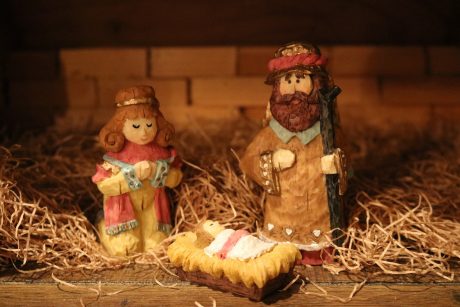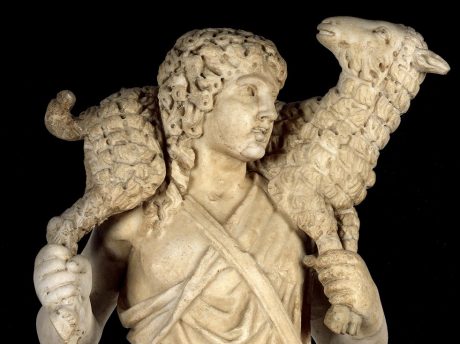
Wrong For Gentiles
A Christ-mess message, loaded to Nemeta first, going to MED/Ginny Thwaite/Hans Carlsson channels on YT.
Wrong For Gentiles:
The Shepherd of Hermas
From Not in His Image:
At the dawn of the Piscean Age, Pagan initiates in the Near East faced an unprecedented challenge: how to present the Anthropos in a public or popular manner, in order to counter the growing popularity of the Christian Redeemer, the god-man Jesus Christ. As the new religion of divine redemption expanded its power base, the guardians of the Mysteries pondered how to mainstream the arcane concept of the Anthropos. Thinking along mythological lines, Syrian Gnostics from Antioch decided that a much-loved figure from ancient Middle Eastern mythology, Tammuz, would be an appropriate stand-in for the Anthropos, True Humanity. Tammuz was the divine shepherd, a lover of the Great Goddess, Ishtar, equivalent to the Greek Aphrodite. But with the suppression of Goddess religion under patriarchy, Tammuz had fallen into relative obscurity, and his Pagan identity had come under taboo. The Antioch cell conceived of reintroducing him in the guise of “the good shepherd,” renamed Hermas.
Some representations of Hermas survive. They show a strong but gentle young man, smiling broadly, standing upright with a lamb across his shoulders. This image was not original with the Antioch cell. Its prototype can be seen in Hermes Kriophoros, the ram bearer, an ancient divinity of the Pelasgians, the indigenous pre-Hellenic people of the Peloponnesus. But the initiates altered the original figure by replacing the ram with a lamb. This was to be the symbol chosen to mirror humanity in the Piscean Age.
The Gnostic figure of Hermas considered by the Antioch cell never emerged, because it was cleverly co-opted by a proto-Christian group in the same city. Yet again, countermimicry came into play. Around 150 C.E. the Antioch congregation, the first group known to call themselves Christians (Acts 11:26), produced a book entitled the Shepherd of Hermas, attributed to the brother of Pius, then bishop of Rome. This early Christian document was included in the Muratori canon, a list of canonical books from the third century. It is also found in some copies of the New Testament, such as the Sinaitic Codex. The Shepherd of Hermas is a loose allegory loaded with sententious advice, totally alien to the Gnostic spirit. Scholars note that the Christology it contains is peculiar, because it does not match the New Testament. In fact, Hermas is closely identified with the Holy Spirit, the Divine Sophia of the Gnostics, consistent with the initiates’ intention. But the good shepherd was completely misrepresented in this pious fiction. The Gospel of Philip records the Gnostic protest against this ploy:
Many who oppose the truth and are messengers of error will set up their error against the pure thoughts of the Revealers. . . . They create an imitation remnant in the name of a dead man, calling it Hermas, the first-born of unrighteousness, in order that the existential Light may not be recognized by petty minds. (NHC II, 3, 77–78)
The initiates must have greatly despaired over this act of cooptation, knowing that anyone who could not see the error in the figure of Jesus Christ, the Archontic substitute for the Anthropos, surely would not see the intentional deceit in Hermas. In the end, the symbol that came to mirror humanity and transmit the message of divine love was an instrument of torture.

One of many sculpted images of the Shepherd of Hermas. Currently in the Vatican.